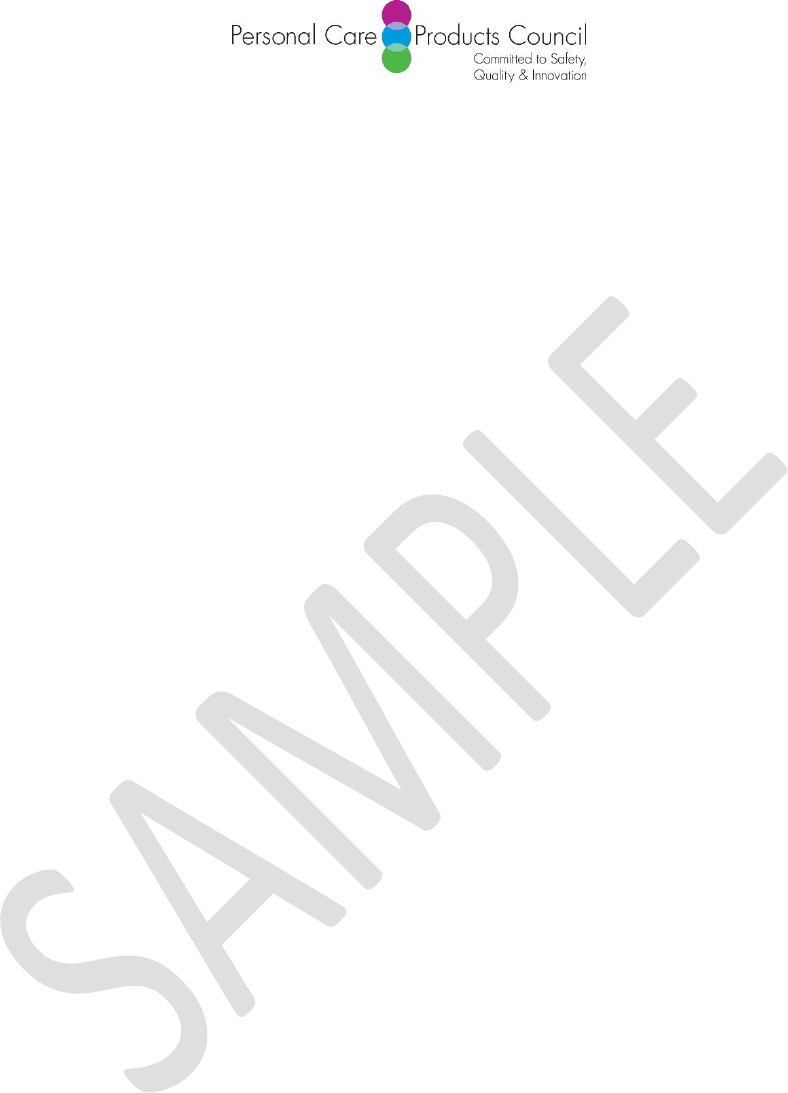
SAMPLE RETURN TO WORK POLICY
(DETAILED)*
General Principles:
1. Working at home: All work that can feasibly be completed at home should be. Only
physically come to work for work that cannot be successfully accomplished at
home.
2. Corporate Certificate of Compliance: Before returning to work, each employee
must sign a Corporate Certificate of Compliance acknowledging that they have not
tested positive for COVID-19, nor have any symptoms of the virus. If traveling
between company facilities, employees should carry the certificate with them or
have a picture of it on their phone.
3. Social Distancing: All employees are instructed to maintain at least six feet distance
from each other and any third parties, except when required to accept or deliver
goods or services, or as otherwise necessary. Employees who need to sneeze or
cough should use a cloth or tissue or, if not available, into their elbow. Do not
shake hands or engage in any unnecessary physical contact with any other
individuals at the work site.
Assessing Health Risk:
4. Pre-existing conditions or circumstances: We strongly encourage all employees to
consider if they are at high risk of severe illness or living with individuals who are at
high risk of severe illness. Employees who self-identify as being at higher risk are
encouraged to practice an abundance of caution and to consider working from home.
You should work with your supervisor to develop the appropriate plan for you. The CDC
defines high risk people as follows:
•
People aged 65 years and older
•
People who live in a nursing home or long-term care facility
•
Other high-risk conditions could include:
o
People with chronic lung disease or moderate to severe asthma
o
People who have serious heart conditions
o
People who are immunocompromised including cancer treatment
o
People of any age with severe obesity (body mass index or BMI >40)
or certain underlying medical conditions, particularly if not well
controlled, such as those with diabetes, renal failure, or liver disease
might also be at risk

•
People who are pregnant should be monitored since they are known to be at
risk with severe viral illness, however, to date data on COVID-19 has not shown
increased risk
•
Many conditions can cause a person to be immunocompromised, including
cancer treatment, bone marrow or organ transplantation, immune deficiencies,
poorly controlled HIV or AIDS, and prolonged use of corticosteroids and other
immune weakening medications
5. Known or potential COVID-19 infection: Any employee with a temperature of
greater than 100
o
F, or who would exhibit such fever in the absence of fever
reducing drugs) and/or with symptoms of cough or difficulty breathing, should
inform their supervisor and stay home.
6. Known contacts with COVID-19 positive or high-risk individuals: Any employee who
has had recent contact with an individual known to have tested positive for coronavirus,
or any employee that has been exposed to a recent high-risk situation, such as national
or international airline travel to a known virus “hot spot” or who has had contact with
an individual from a high-risk area, should inform their manager and stay at home.
7. Safety Training: All employees should read these guidelines prior to coming into work
for the first time. If you do not understand the guidance or have questions, contact
your supervisor.
8. Daily home temperature testing and symptom check: All employees that plan to
work onsite must assess for potential signs and symptoms of coronavirus each day
prior to coming to work. This assessment must at a minimum include:
• Check temperature. If you do not have a thermometer at home, please inform
your supervisor. [COMPANY may provide a thermometer to employee, provide
one onsite, or ask the employee not to return to work.]
• Assess for presence of cough or shortness of breath
• Assess for any other new or unexplained physical symptoms of illness (including
flu-like symptoms).
o See CDC website for typical symptoms of COVID-19:
https://www.cdc.gov/coronavirus/2019-ncov/symptoms-
testing/symptoms.html
Onsite Safety Procedures:
9. Masks: Employees are encouraged to bring and wear masks or cloth face coverings
while in the office, and especially in common areas. If possible, masks should be
washed each at home on a regular basis.
10. Handwashing: Should be performed at regular intervals using soap and water and/or
hand sanitizers and should be performed before and after entering communal spaces.

11. Food: Do not store any food from home in communal areas and keep any mugs or re-
usable service items from home at your desk. Food should be eaten in isolation rather
than in communal areas. Disposable utensils only should be used and paper cups.
12. Bathroom use: Where possible, employees should aim to use the bathroom
facilities one at a time.
13. Meetings: Face-to-face meetings should only be convened if they are business critical.
Meeting attendee numbers should be kept to a bare minimum and social distancing
rules should be enforced in all meeting rooms.
14. Cleaning of the facility: Will be ongoing, including high touch surfaces.
Procedure for Employees with COVID-19 Symptoms
15. COVID-19 Positive Diagnosis: In the event that an individual is diagnosed with
COVID-19, they should immediately inform their supervisor or HR and self-
quarantine for a mandatory 14-days (per CDC Guidelines).
16. COVID-19 Symptoms: Employees with symptoms of COVID-19 should self-quarantine
and consult with their physicians. If they subsequently test negative for COVID-19, they
may return to onsite working with their doctor’s permission. If they subsequently test
positive for COVID-19, they should follow the instructions above for positive diagnosis.
17. Managing Close Contacts: If an employee is diagnosed or suspected of being COVID-
19 positive, close contacts will be identified and the employee asked to self-
quarantine for 14-days. Such cases should be reported to HR and your supervisor.
18. Return to Work After Positive COVID-19 Diagnosis: Individuals diagnosed with
COVID-19 may return to onsite working with guidance from their healthcare
provider that it is safe for them to return to work and once the following
conditions have been met (CDC guidelines):
(a) If no test has been performed to determine whether you are still contagious:
• No fever for more than 72 hours (3 full days of no fever
without fever reducing medicine)
AND
• Other symptoms improved (for example cough or shortness
of breath)
AND
• At least 7 days have passed since symptoms first appeared
(b) If tested to determine whether you are still contagious:
• You no longer have a fever (without fever reducing
medicine) AND

• Other symptoms improved (for example cough or shortness
of breath)
AND
• Two negative tests in a row, 24 hours apart.
Onsite Logistics
19. Arrival and departure: Employees should adhere to pre-scheduled times and depart as
soon as their work is finished.
20. Office space: No more than two employees should be in an office at any one time, and
social distancing (six feet separation) should be maintained.
21. Employees Not Observing Guidelines: Employees are encouraged to speak up and let
colleagues know if they are not adequately following the safety guidelines.
22. Front desk receptionists: Should wear a mask whenever an employee is entering or
leaving the office space.
*DISCLAIMER: This Sample Return to Work Policy is for informational purposes only and to provide PCPC
members guidance on reducing employees’ risk of exposure to SARS-CoV-2 (“COVID-19”) in the
workplace based on federal, state, and local guidelines. Please note, because government requirements
are constantly changing, employers should monitor developments and consult with private counsel for
advice based on their specific circumstances.
